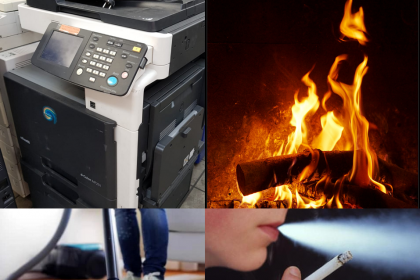Do you smell it ?
That radioactive but noble smell tingling your senses as it is coming up from your basement and your Geiger counter crackles faster and faster. It surrounds you quickly and you cannot fight it… You ask yourself: “why me ?” “How did it get in my home?” “Damn you, Radon !”, as you exhale your last breath and everything fades away…
Wow… That was dark. But fortunately, that is not exactly how Radon will affect you, in reality, you will not even smell Radon coming for you !
Alright, alright… Enough joking around. What is radon and why does it seem so bad? Let’s find out!

Radon is a noble gas with the symbol Rn and atomic number 86. It occurs naturally in the slow but certain decaying chain of thorium and uranium into lead. It is the direct decay product of radium, an alkaline earth metal. It is a odourless, colourless and tasteless gas that is also radioactive with a half-life of only 3.8 days, making it an extremely rare element.
However, it remains a dangerous gas because of its radioactivity and its ability to accumulate in our cellars.
As Radon forms in uranium rich soils, it slowly creeps up to the surface and can infiltrate the building’s lower floors trough the cracks, construction joints, service pipes, etc… And it can also contaminate water supply. The concentration builds up in the basement because its mass is greater than the air’s.
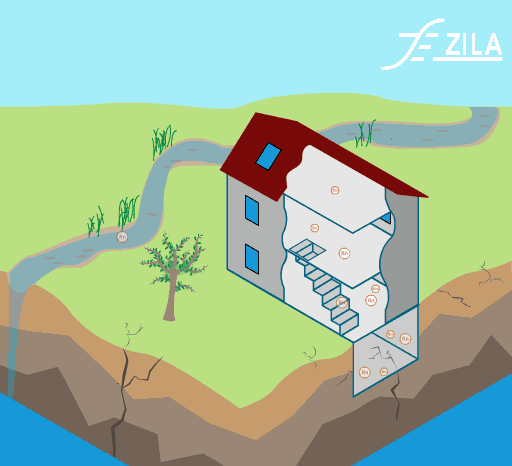
This kind of indoor air pollution was first documented in 1950 but had to wait until an incident in 1984 to get widely known. This incident was about a nuclear plant worker undertaking a routine monitoring and finding that he had been contaminated with radioactivity, despite the nuclear plant having never been loaded with uranium nor being in use. Later was found out a high radon concentration in that worker’s home. Since that time, some countries have created maximum radon concentration recommendation and developed ways to mitigate its build-up and the adverse health effects it can have on the population.
These effects on health have been studied since the radon pollution discovery and the main thing we can get from these is that radon can be the cause of lung cancer because of its radioactivity. Relationhips with other diseases remain to be proven to this day. Radon has been identified as the second greatest cause of lung cancers just behind smoking. To be fair, 75% of all lung cancers can be attributed to tobacco use, but still, radon remains an important matter to address. So how can one protect himself from exposure and its adverse effects on lungs ?
First, you should find out if you live in a high radon emittance zone or not, meaning if the soil you live on is rich in uranium or not. For example, in Switzerland, the government conducted a large radon measure campaign and mapped the probability of exceedance of the recommended radon concentration on the whole territory.
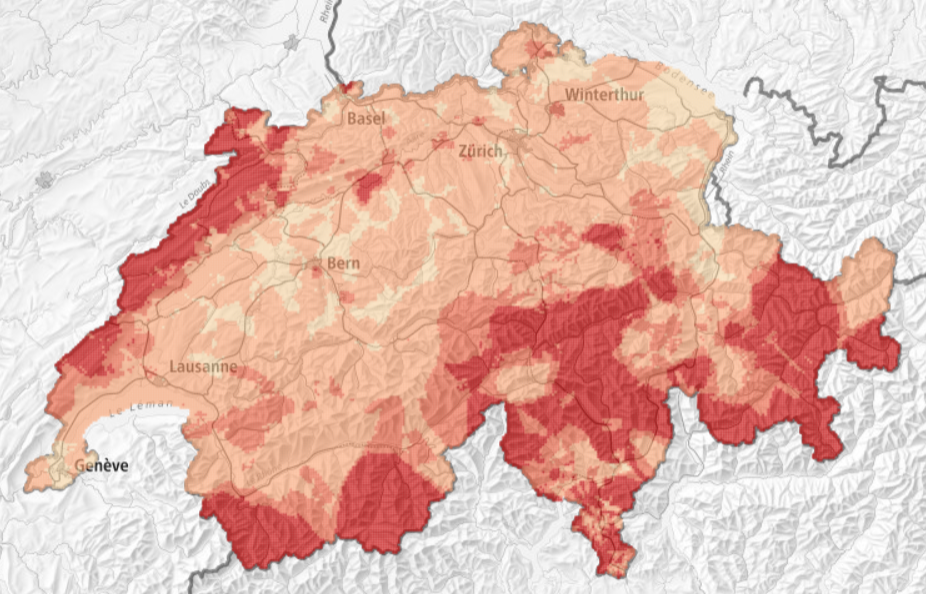
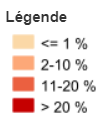
If you live in a medium or high concentration zone or have no data available for your location, you should get the exact concentration in your building measured. Otherwise, if you live in a low concentration
zone, you should follow official recommendation, but often, there is no need to worry too much about it.
Radon pollution, unlike other air pollutants, is not measured with mass per volume or molar concentration. It is instead measured with radioactive units, usually becquerel per cubic meter (Bq/m3). 1 Bq is equal to one radioactive decay per second; around the world, outdoor radon concentrations correspond on average to 10 Bq/m3. Other units like picocuries (pCi/L) are also used in some countries. In Switzerland, the maximum radon concentration under which it is deemed safe is fixed at 300 Bq/m3.
For the measurements, you can choose to make them yourself or have them made by a professional. Self-measurement kits can be bought and consist of a can that you leave in your basement for a fixed amount of time, that you close and send to the lab for measurements. These tests can vary a lot depending on the place at which you place it. It may be good to leave several cans at the locations you think are the most relevant. Alternatively, you can ask for a professional to come in your home to take some measurements with a special device that will provide you with real time results depending on where you place it. This eliminates the location imprecision as you can make a lot of measurements.
Try not to ventilate the measurement rooms more than what you usually do as it could skew the results.
“And then, what happens if my home has higher radon concentration than the recommendations?” you may rightfully ask. Don’t worry! There is an easy way to fix it. The most economical way to do it is a ventilation system that prevents the radon from entering your home by creating a low-pressure path. This only consists of a hole in your basement slab, a pipe connecting the hole to the outside and a weather-resistant fan fixed on the pipe. With this device, radon will be redirected outside and won’t build up in your basement.
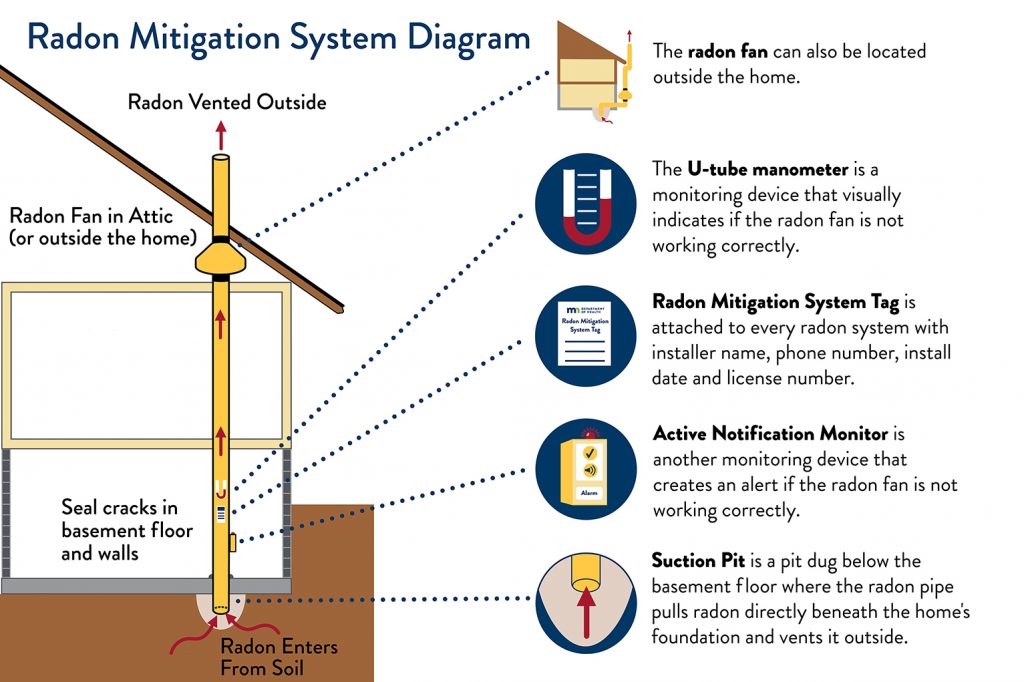
If you’re building new, you may want to plan for the mitigation of radon before it becomes a problem. For that, you need a perfect sealing of your foundation and more generally of every wall in contact with the ground. In civil engineering, this means putting enough reinforcement in concrete so that it will not crack at any time.
References :
-Health effects of radon exposure. Kang J.-K, Seo S. Jin Y.W. July 2019 published in Yonsei medical journal.
-Radon: an overview on health effects. Field R.W. 1 january 2011 published in encyclopedia of environmental health
-Lung cancer in never smokers – a different disease. Sun S. Schiller J.H. Gazdar A.F. October 2007 published in Nature Reviews Cancer.
-Health risks due to radon in drinking water. Hopke P.K. & al.
-Radon in homes and risk of lung cancer: Collaborative analysis of individual data from 13 European case-control studies. Darby S. & al.
–Carte du radon en Suisse (admin.ch)
–Radon: Health risks and limit values (zila.de)
–Radon Mitigation System – EH: Minnesota Department of Health (state.mn.us)

